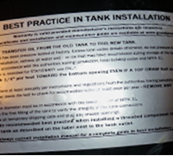Newsletter
Are Best Practices (Still) a Good Idea?
Aug 28, 2019

“Best practice” is a ubiquitous prefix, guiding us to recommendations for everything from installing an oil tank to surviving a shark attack. Certainly, best practices are a staple of health care organizations, where the altruistic sharing of good ideas and their operating instructions is accepted behavior. But, to date, the designation of “best” has been mostly unfettered by definitions or criteria.
If you need a best practice, where do you look? Is their best practice better than yours? And who said it was the best?
Without reliable external intelligence, organizations in search of improvement methods may forgo the “adopt” shortcut and opt for a homemade solution. Unfortunately, that means navigating the rough seas of developing a unique answer to what is actually a common problem, only to founder on the rocks of scope creep, insufficient time and resources, and unintended consequences.
There is a better way: look at your data, then look to your peers.
Comparative medical error data not only help an organization or clinical department understand its most pressing risks, but can also steer patient safety personnel to proven solutions. Understanding who else shares your risk exposure—and whose error rates are lower—moves you closer to field-tested interventions.
Identifying existing interventions that have shown measured success in settings similar to yours can drastically reduce the cost and timeframe for improvement. Organizations that formalize this process should consider the following questions in their assessment:
Is the “best” practice or intervention...
- ...field-tested?
Has it been implemented and used for a sufficient period to prove its benefits and filter out any shortcomings or unintended consequences? - ...efficient?
Will it reduce workload, or will any increased workload be justified by the ultimate benefits? - ...repeatable/adaptable?
Can it be implemented elsewhere, with modifications for the adopter's specific needs? - ...sustainable?
Can it be maintained without extraordinary effort or expense? - ...measured?
Can its impact be supported by quantitative and qualitative evidence? - ...well-defined?
Have the details of its development, implementation, and measurement been documented? - ...superior?
Is it better than all other options? - ...causative?
Are the benefits seen exclusively due to the practice/intervention and not to external factors?
Adopting a best practice that satisfies the above criteria is rarely plug-and-play. Introducing someone else’s good idea to your setting often requires communication with the source organization, observation of the intervention in operation, and collaboration through the implementation phase. Nevertheless, as the community of organizations using a given best practice grows, so too does the capacity for measurement and improvement.
Additional Material
[Parts of this edition of SPS were originally published in August 2009]
